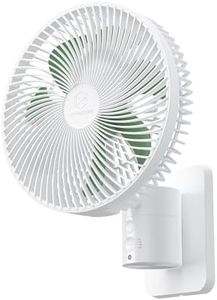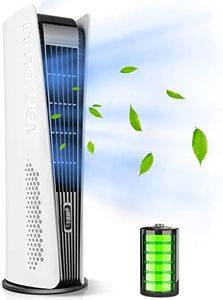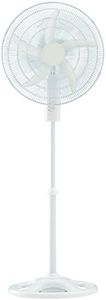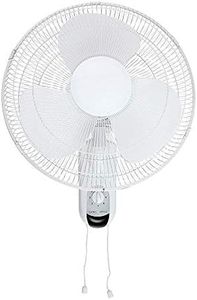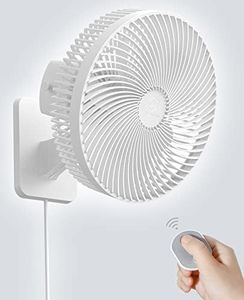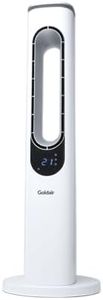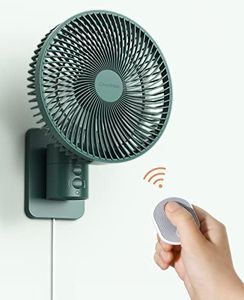We Use CookiesWe use cookies to enhance the security, performance,
functionality and for analytical and promotional activities. By continuing to browse this site you
are agreeing to our privacy policy
10 Best Quiet Oscillating Fans
From leading brands and best sellers available on the web.By clicking on a link to a third party's website, log data is shared with that third party.
Buying Guide for the Best Quiet Oscillating Fans
When choosing a quiet oscillating fan, it's important to focus on your intended use, the size of your space, and what features will make your experience most comfortable. Fans come with a variety of functions and designs, so understanding key specifications will help you pinpoint the best match for your needs. Consider where you'll place the fan (like bedroom, living room, or office), how sensitive you are to noise, and any other preferences like remote controls or timing features. The key is to balance performance, quietness, and convenience for your environment.Noise Level (dB)Noise level, measured in decibels (dB), tells you how loud or quiet a fan will be while running. This is especially important if you plan to use the fan in places where silence is appreciated, such as bedrooms, nurseries, or offices. Lower dB values mean quieter operation. Fans with noise levels under 40 dB are considered very quiet, suitable for sleeping or working. Levels from 40-50 dB are moderate and generally pleasant for most rooms, while above 50 dB can start to get noticeable and might disturb sensitive users. Think about your own noise tolerance and where the fan will be used—if you need it while sleeping or focusing, lean toward lower dB models.
Oscillation RangeOscillation range describes how far the fan can sweep back and forth, measured in degrees. A wider oscillation means the fan distributes air over a broader section of the room, while a narrower one focuses airflow on a specific spot. Ranges around 60-90 degrees are standard for personal cooling, 90-120 degrees suit medium-sized areas, and 120 degrees or more are best for large rooms or when you want to cool the whole space fairly evenly. Consider how many people or what space you want to cover—select a range that matches your coverage needs.
Fan Size (Blade or Height)Fan size, usually given in blade diameter or overall height, affects how much air it can move and how well it fits your space. Smaller fans (under 12 inches or under 30 cm tall) are best for desks or personal use. Medium sizes (12–16 inches or 30–45 cm) are typical for bedside or living room spots. Larger fans (over 16 inches or above 45 cm) offer more powerful airflow for bigger areas. Consider where you plan to place the fan and how strong of an airflow you want versus how much space you have available.
Speed SettingsSpeed settings let you control how forceful the airflow is, often ranging from 2 to 5 or more levels. More settings give you greater flexibility to find your comfort zone and can also help with noise control—lower speeds are quieter. If you like fine-tuning your environment, look for fans with more speed options. If you just want something simple, even two or three speeds can be enough.
Control OptionsControl options refer to how you interact with the fan—via buttons, knobs, a remote control, or sometimes even smartphone apps. Manual controls are straightforward and reliable, while remotes and smart features add convenience, especially if you plan to use the fan from a distance or at night. Think about how you tend to use comfort appliances: If you want to adjust settings from the sofa or bed, remote or smart controls could really add to your satisfaction.
Timer FunctionA timer function allows you to set the fan to turn off automatically after a specific period, which can be very helpful if you want cooling for falling asleep but don't want the fan running all night, or if you like the convenience of setting and forgetting. Timers may offer a range from 30 minutes up to 12 hours or more. If you value energy savings or peace of mind about leaving devices on, this feature could be a priority for you.
Build Quality and StabilityBuild quality and stability refer to how sturdy and well-made the fan feels, including the solidness of the base and overall materials. Sturdier fans wobble less during use, are safer around pets and children, and often last longer. If you plan to move the fan often or use it in places with much foot traffic, prioritize models with stable bases and durable construction.



